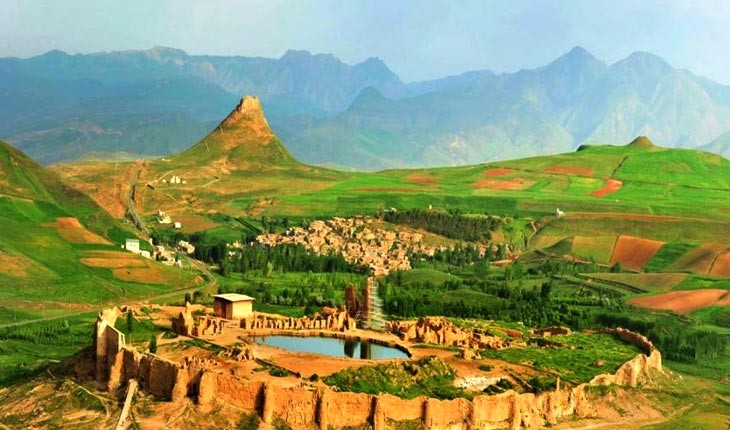
Takht-e Soleyman, an Iran UNESCO world heritage site
Uncategorized / November 26, 2019 / mahboobe firoozTakht-e Soleyman (Throne of Solomon) is an Iran UNESCO world heritage site in the north-west of this country. The archaeological site sets in the volcanic region of the mountain. It includes a Zoroastrian sanctuary and also a temple dedicated to goddess Anahita. Part of the first construction dates back to the time Ilkhanid or Mongol (13th century) kings were ruling Iran. The second construction is a Sassanid (6th and 7th century) architecture. The most important feature of Takht-e Soleyman is its architecture. Including the design of fire temple, palace and its general layout. It strongly influenced Islamic architecture so it has symbolic importance.
In this harmonious natural setting set remains of a royal architecture from Sassanian period (3th to 7th century). Joined to this palatial architecture is a Zoroastrian sanctuary. Natural atmosphere of the place has also strong symbolic and spiritual inspirations. Such as the lake and fire temple that relates it to cults of water and fire. That is the main reason Takht-e Soleyman was occupied from ancient times. At the heart of Takht-e Soleyman is a walled platform. This platform hosts a lake, a Zoroastrian fire temple, temple of Anahita goddess of waters and also a royal Sassanid palace. The site was destroyed near the end of Sassanian period but Mongol kings of Iran rebuild it during 13th century.
Takht-e Soleyman was the principal fire temple of Zoroastrianism. The monotheistic faith that was state religion of Sassanid dynasty. Aside from the beliefs and teachings of Zoroastrianism, its architecture design influenced next eras. Specially the design of fire temple had a great influence on Islamic architecture and became a main reference for its development. Although symbolic relations of this place is much older than Zoroastrian beliefs. It is also associated with important biblical figures.
Zendan-e Soleyman
There is also an ancient volcano about 100 kilometers west of Takht-e Soleyman. The volcanic mountain rises near 100 meters above the plain surface. There are also remains of shrines and temples on the summit of mountain which date back to first millennium BC. Zendan-e Soleyman has many mythical associations with legendary King Solomon too.
This archaeological ensemble registered as an Iran UNESCO world heritage site in 2003.

